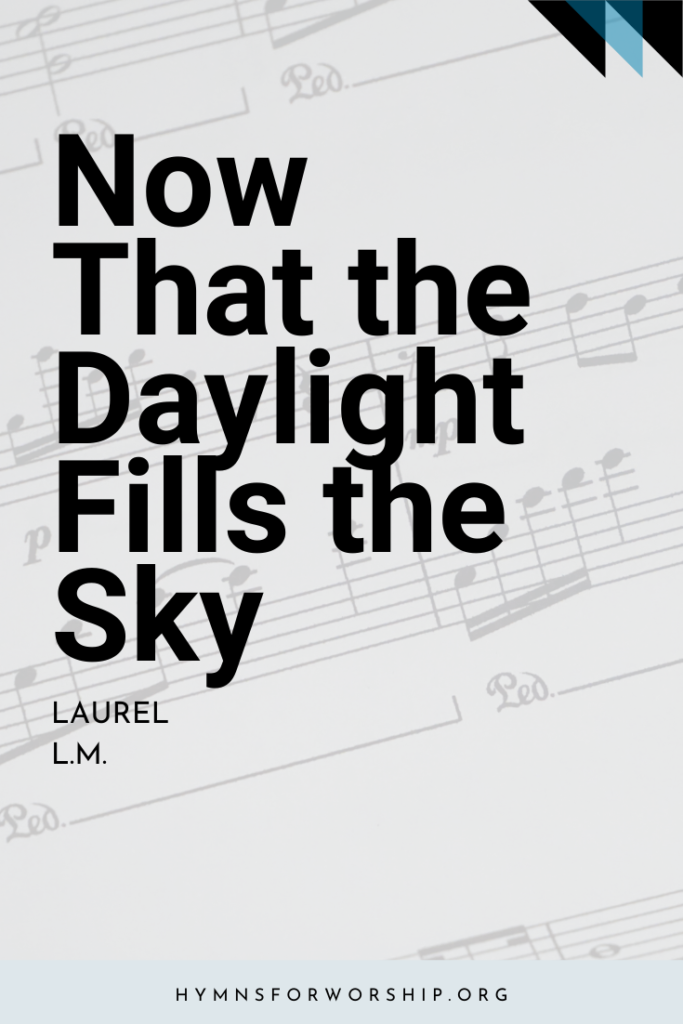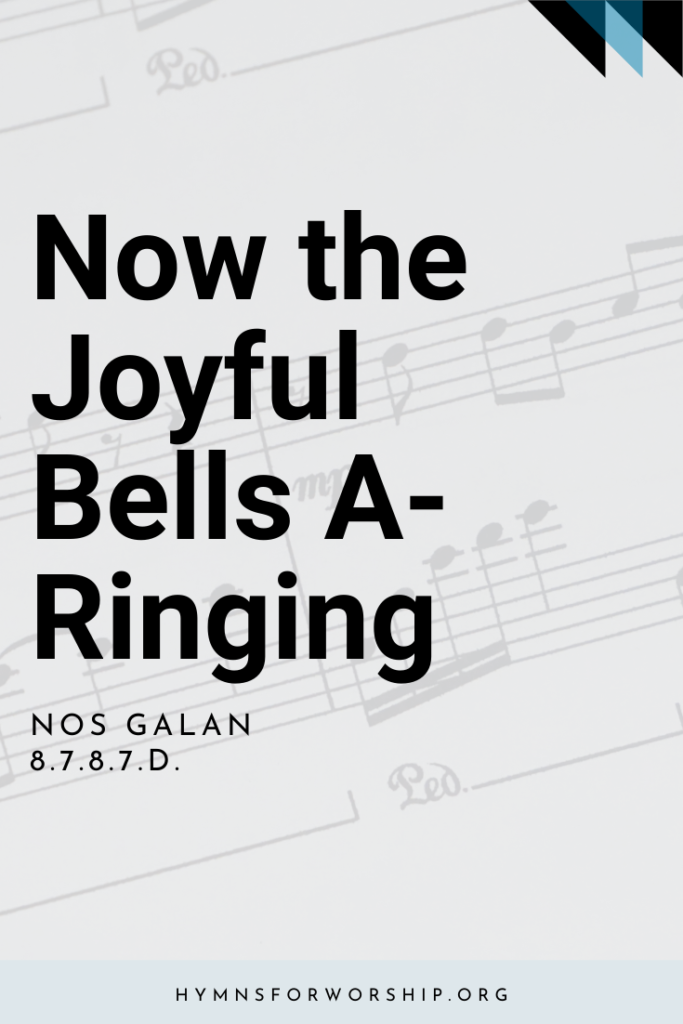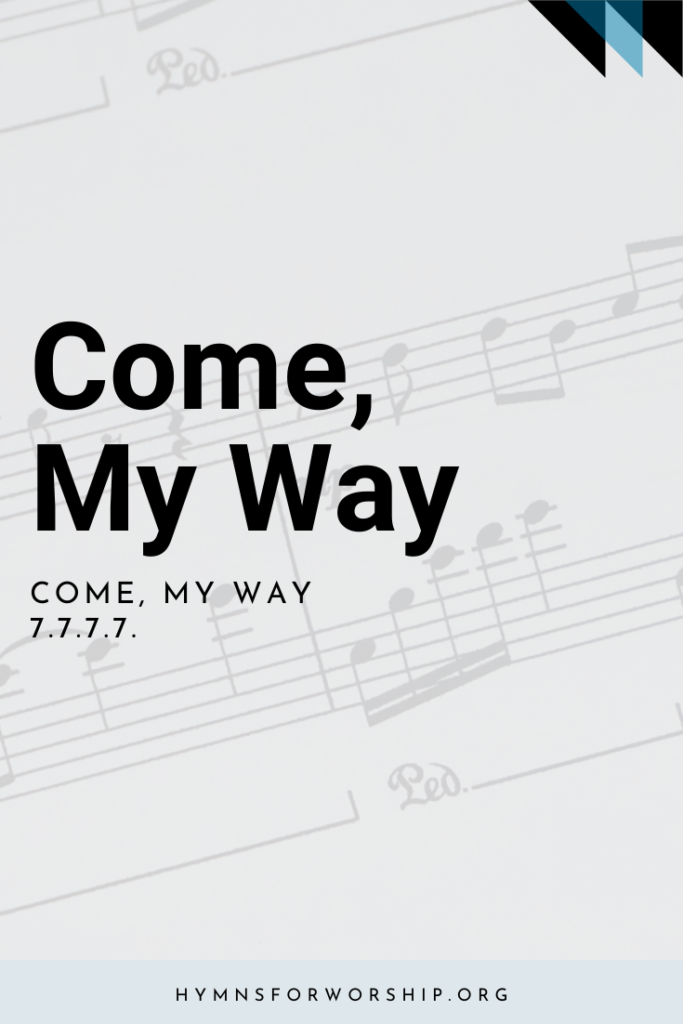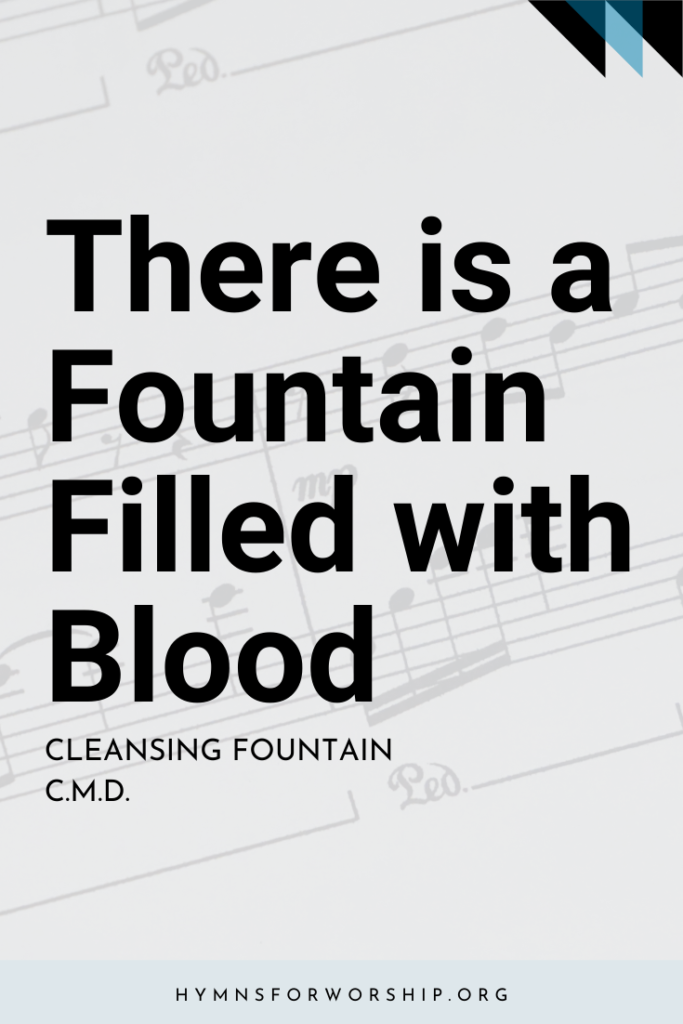WORSHIP >> Morning WORSHIP
SDAH 42
Now that the daylight fills the sky,
We lift our hearts to God on high,
That He, in all we do or say,
Would keep us free from harm today;


Text
1
Now that the daylight fills the sky,
We lift our hearts to God on high,
That He, in all we do or say,
Would keep us free from harm today;
2
Would guard our hearts and tongues from strife;
From anger’s din would shield our life;
From evil sights would turn our eyes,
And close our ears to vanities;
3
So we, when this new day is gone
And night in turn is drawing on,
With conscience by the world unstained
Shall praise His name for vict’ry gained.
4
“All praise to You, creator Lord!
All praise to You, eternal Word!
All praise to You, O Spirit wise!”
We sing as daylight fills the skies.

Hymn Info
Biblical Reference
(c) 1 Cor 15:57
Translator
John M. Neale (1818-1866)
Text Source
Latin hymn
Year Published
7th or 8th century
Performance Suggestions
When sung as a canon, start at the 2nd beat of the 2nd measure
Copyright
Music copyright by Lutheran Church Press and Augsburg Publishing House. Used by permission.
Hymn Tune
LAUREL
Metrical Number
L.M.
Composer
Dale Wood (1934-2003)
Theme
MORNING WORSHIP
Hymn Score
[tnc-pdf-viewer-iframe file=”https://hymnsforworship.org/wp-content/uploads/2017/03/SDAH042.pdf” width=”900″ height=”850″ download=”true” print=”true” fullscreen=”false” share=”true” zoom=”true” open=”true” pagenav=”true” logo=”true” find=”true” language=”en-US” page=”” default_zoom=”auto” pagemode=””]
Piano Accompaniment
[wonderplugin_audio id=”43″]
Notes
Get to know the hymns a little deeper with the SDA Hymnal Companion. Use our song leader’s notes to engage your congregation in singing with understanding. Even better, involve kids in learning this hymn with our homeschooling materials.
The authorship and date of this Latin hymn are unknown, but it was used widely in England and Ireland in the Middle Ages and it possibly as old as the fifth century. Sung at the Office of the Prime (early-morning service at 7:00 a.m., it has been translated a number of times, beginning variously with “Now the Daystar Glimmers Bright.” “Now With the Risen Star of Dawn,” and “Now the Daystar Glimmers Bright.” John M. Neale’s (1818-1866; see Biographies) translation is the most often used, but it has been altered, especially in the final stanza.
Neale printed it in the Hymnal Noted, 1851, and in the English Hymns Ancient and Modern (1962 edition), the most successful hymnbook of all time, where it appeared as hymn No. 1.
LAUREL, named after the composer’s niece, was first printed in Young Children Sing, 1967, with the text “Good Morning Sun!” In common with the canon of Thomas Tallis (SDAH 53), the tenor part is in canon with the soprano, beginning with the third beat and marked with an asterisk.
Dale Wood was born February 13, 1934, 18 years after his sister, while the family was living in Glendale, California. When only 13 years of age, he won first prize in a nationwide hymn-writing contest sponsored by the Luther League. The next year, while organist-choirmaster at Hope Lutheran Church in Hollywood, his first choral anthem was published–the forerunner of several hundred that have made him one of the best-known American church music composers. After study at Los Angeles Institute for the Arts, he served at Eden Lutheran Church, Riverside, California, and the Episcopal Church of St. Mary the Virgin in San Francisco. Here he was also the director for the San Francisco Cathedral School for Boys.
Articles from his pen on liturgy, worship, and church music have been published in many journals, and he is much in demand as a conductor of choral festivals. In an article for The Hymn (April 1972) titled “The Value of Hymns,” he wrote: “If we ever expect to witness a singing congregation which enjoys a wide exposure to good hymnody, it must start in the church school and choir rehearsal classrooms. None of our educational responsibilities could be more important than teaching hymns. The hymns we teach them [the children] will probably be their favorites in 10 to 50 years. Let us pack their minds with truly great hymns because they have a great message — not because we happened to learn them as children ourselves.”
Wood has served as editorial consultant for several hymnals, for the Inter-Lutheran Commission on Worship, and the international Choristers Guild. The American Society of Composers, Authors, and Publishers (ASCAP) has honored Dale Wood annually since 1967 for his “very important contribution toward the creation and development of contemporary American music.” One critic called him “Mr. Joy,” a name that accurately describes his personality and has stuck with him ever since. At this writing, his creativity continues to flourish at his home in Sea Ranch, California, where he composes music and serves as editor for the Sacred Music Press, Dayton, Ohio.
Dale Wood also wrote EDEN CHURCH, SDAH 235, LAUREL is used again for the text “Every Flower that grows.” SDAH 550.






